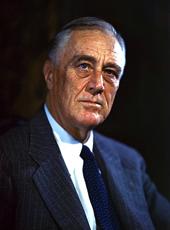
Executive Order 8267—Amendment of Executive Order No. 7242 of December 6, 1935, Prescribing Regulations Governing Highways, Vehicles, and Vehicular Traffic in the Canal Zone
By virtue of and pursuant to the authority vested in me by sections 321 to 323 of title 2 of the Canal Zone Code, approved June 19, 1934, and by section 2 of the act of July 10, 1937, 50 Stat. 510, Executive Order No. 7242 of December 6, 1935, prescribing regulations governing highways, vehicles, and vehicular traffic in the Canal Zone, is amended as indicated below.
1. Subdivision F of Article 5 of the said Executive order, consisting of a subdivision heading and sections 161 and 162, is hereby amended to read as follows:
"F. REGULATIONS APPLICABLE TO VEHICLES TRANSPORTING INFLAMMABLE LIQUIDS OR COMBUSTIBLE LIQUIDS IN BULK
"61. Vehicles transporting inflammable liquids in bulk.—Every motor vehicle used in the transportation on the highways of inflammable liquids in bulk, by which is meant any liquid in bulk which gives off inflammable vapors at or below a temperature of 80 degrees Fahrenheit, shall be equipped with the safety devices specified, and conform to the regulations prescribed, in this section:
"(a) Bumpers.—Every tank truck shall be provided with properly attached steel bumpers. The rear bumper or chassis extension shall be so arranged as to protect adequately the draw-off valves or faucets in case of collision.
"(b) Vents.—Every tank compartment shall be provided with a 3/4-inch vacuum and pressure-operated vent, and in addition thereto venting facilities of such size and capacity as will safely relieve such internal pressure as may be created by exposure fires.
"(c) Draw-off valves or faucets.—All draw-off valves or faucets shall have the discharge end threaded, or be otherwise so designed as to permit a tight connection with the hose extending to the fill pipe or service tank.
"(d) Emergency shut-off valves.—Each compartment of a gravity-discharge truck tank shall be equipped with a reliable and efficient emergency shut-off valve. These valves shall (1) be located in the compartment outlet inside the shell of the tank, (2) be mechanically kept closed except during delivery operations, and (3) be so interlocked with delivery operations that they will be manually closed when such operations are completed. The operating mechanism of these valves shall be so arranged that they can be manually closed either from the front or rear end of the tank. The mechanism at the rear end of the tank shall be provided with a fusible point and a device that will automatically close the emergency shut-off valves in case of fire.
"(e) Shear section.—In every case there shall be provided, between the seat of the emergency shut-off valve and the discharge faucet, a shear section which will break under a strain and leave intact the seat of the valve.
"(f) Metallic connection.—The tank, chassis, axles, and springs shall be metallically connected.
"(g) Drag chains.—Tank trucks shall be equipped with drag chains long enough to reach the ground in order to drain off such static charges as may be generated by splashing of the contents or other causes. Drag chains shall not be fastened to the discharge pipes but to the chassis which is in metallic contact with the tank.
"(h) Filling pipe.—During the filling of the truck tank, or when discharging into service tanks, electrical contact shall be maintained between the truck tank and the filling pipe or service tank. This contact shall be effected by a bond wire metallically connected to the fill pipe or service tank and fastened to a binding post on the truck tank by any approved connection.
"(i) Exemptions as to truck tanks in service on January 1, 1936.—Gravitydischarge truck tanks in service in the Canal Zone on January 1, 1936, shall be exempt (1) from the requirement of paragraph (d) of this section that emergency shut-off valves be interlocked with delivery operations, (2) from the requirement of paragraph (d) of a device that will automatically close the emergency shut-off valves in case of fire, and (3) from the requirement of paragraph (e) of this section relative to shear sections.
"162. Vehicles transporting combustible liquids in bulk.—Every motor vehicle used in the transportation on the highways of combustible liquids in bulk, by which is meant any liquid in bulk having a flash point above 80 degrees Fahrenheit, shall be equipped with the safety devices specified, and shall conform to the regulations prescribed, in paragraphs (a), (b), and (c) of section 161 of this order."
2. Section 181 of the said Executive order is hereby amended to read as follows:
"181. Punishment for violations.—Any person who shall violate any of the provisions of this order, or of regulations prescribed hereunder, shall be punishable, as provided in section 323 of title 2 of the Canal Zone Code, as amended by section 2 of the act of July 10, 1937, 50 Stat. 510, by a fine of not more than $100, or by imprisonment in jail for not more than thirty days, or by both."

FRANKLIN D ROOSEVELT
The White House,
October 5, 1939.
Franklin D. Roosevelt, Executive Order 8267—Amendment of Executive Order No. 7242 of December 6, 1935, Prescribing Regulations Governing Highways, Vehicles, and Vehicular Traffic in the Canal Zone Online by Gerhard Peters and John T. Woolley, The American Presidency Project https://www.presidency.ucsb.edu/node/210774
